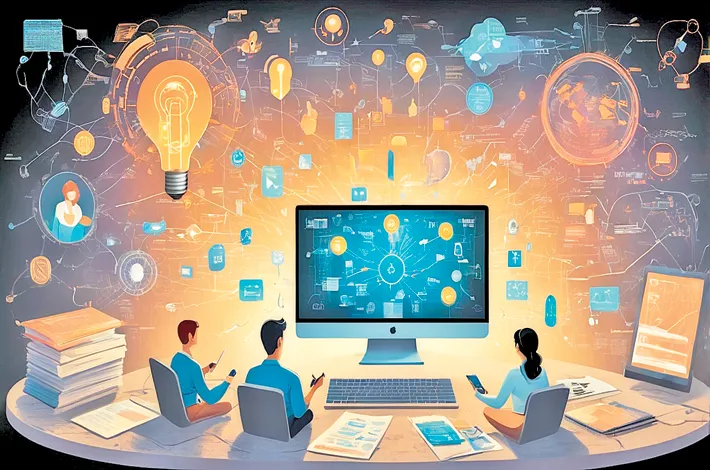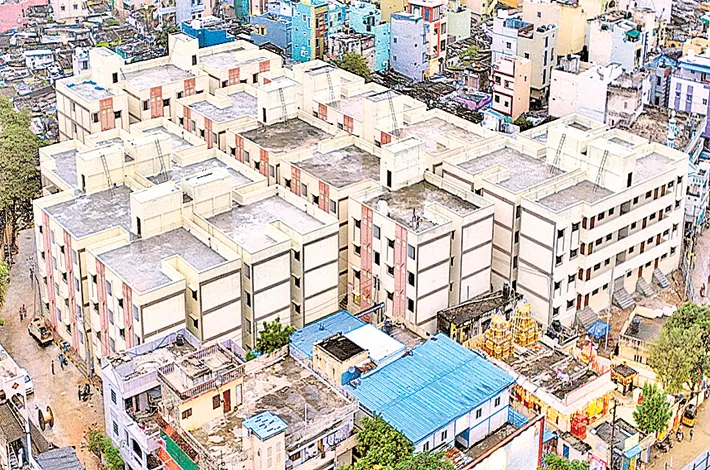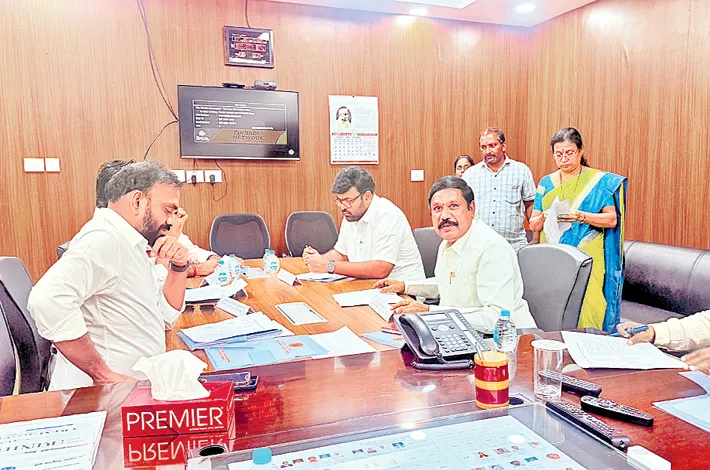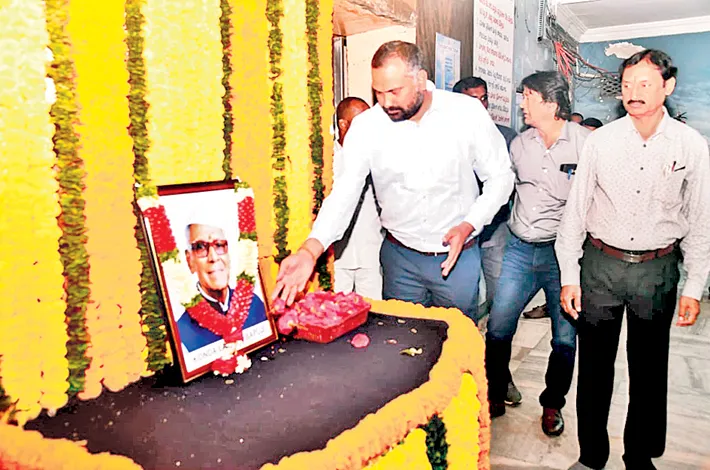Optimizing Technology Use in Daily Life : A Balanced Approach
22-05-2025 12:00:00 AM

In the bustling rhythm of modern life, technology is both a lifeline and a potential overload. From smartphones to smart homes, it shapes how we work, connect, and unwind. Chennai, a city blending tradition with innovation, exemplifies this duality—where temple bells coexist with the hum of IT hubs.
Yet, the key to thriving in this digital age lies in using technology optimally: leveraging its benefits while avoiding its pitfalls. Here’s how to integrate technology into daily life for maximum efficiency, productivity, and well-being.
1. Streamline Communication with Purposeful Tools
Communication is the heartbeat of daily life, and technology offers countless ways to stay connected. Apps like WhatsApp, Telegram, or Slack keep us in touch with family, friends, and colleagues, but constant notifications can fracture focus. To optimize, curate your communication tools. Use WhatsApp for personal chats, Slack for work, and email for formal exchanges.
Set specific times—say, 10 a.m. and 4 p.m.—to check messages, silencing notifications otherwise. For example, a Chennai-based software engineer might mute group chats during deep-coding sessions, checking them during lunch at a local dosa stall. Tools like Google Calendar can sync schedules across devices, ensuring you never miss a meeting or a family event at Marina Beach.
2. Boost Productivity with Task Management Apps
Productivity apps can transform chaotic days into structured ones. Tools like Trello, Notion, or Microsoft To-Do help organize tasks, from work projects to grocery lists. Create boards or lists for categories like “Work,” “Personal,” and “Health.” For instance, a Chennai teacher preparing for classes at Anna University might use Trello to track lesson plans, grading deadlines, and research papers, setting reminders for each. Limit app usage to avoid overlap—stick to one primary tool. Pair this with the Pomodoro technique (25 minutes of focused work, 5-minute breaks) using apps like Focus@Will or a simple phone timer to maintain momentum without burnout.
3. Leverage Automation for Routine Tasks
Automation saves time and mental energy. Smart home devices like Google Nest or Amazon Echo can control lights, fans, or coffee makers, streamlining morning routines. In a Chennai apartment, you might program your AC to turn on before you return from a humid commute.
Apps like IFTTT (If This, Then That) can automate digital tasks—syncing Google Drive files to Dropbox or scheduling social media posts. For small business owners in T. Nagar’s markets, automating inventory updates via tools like Zoho Inventory reduces manual work, leaving time for customer interactions. Start small: automate one task, like bill payments via banking apps, and expand as you get comfortable.
4. Curate Information Consumption
The internet is an ocean of information, but drowning in it is easy. Optimize by curating your feeds. Use RSS readers like Feedly to follow trusted news sources or blogs, avoiding the clutter of social media algorithms. For instance, a Chennai student preparing for UPSC exams might subscribe to The Hindu and PIB feeds, checking them twice daily to stay informed without doomscrolling.
On platforms like X, follow accounts relevant to your interests—say, local Chennai events or tech updates—and mute or unfollow those that distract. Set screen-time limits using built-in phone features (e.g., Apple’s Screen Time or Android’s Digital Wellbeing) to cap social media at, say, 30 minutes daily.
5. Prioritize Digital Well-Being
Technology can strain mental and physical health if unchecked. Blue light from screens disrupts sleep, and constant connectivity fuels stress. Use apps like Twilight or Night Shift to reduce blue light exposure after 8 p.m. A Chennai professional commuting via the Metro might use noise-canceling earbuds and a meditation app like Calm for a mindful ride.
Schedule tech-free hours—perhaps during family dinners or a walk along Besant Nagar Beach—to reconnect with the present. Wearables like Fitbit or Apple Watch can track sleep and activity, nudging you toward healthier habits, like 10,000 steps daily or 7 hours of sleep.
6. Enhance Learning and Skills
Technology democratizes learning, offering resources for personal and professional growth. Platforms like Coursera, Udemy, or YouTube provide courses on everything from coding to cooking. A Chennai homemaker might learn digital marketing via Udemy to start an online boutique, while a student could master Python on Codecademy. Use tools like Anki for spaced-repetition learning to retain information, perfect for language learners or exam prep. Dedicate 30 minutes daily to learning, scheduling it like a meeting to ensure consistency.
7. Secure Your Digital Life
With great tech comes great responsibility. Cybersecurity is non-negotiable in daily life. Use strong, unique passwords managed by tools like LastPass or Bitwarden. Enable two-factor authentication (2FA) on banking and email accounts. A Chennai entrepreneur running a startup in Guindy might use VPNs like NordVPN when working from cafes to secure sensitive data. Regularly update software to patch vulnerabilities, and back up files to cloud services like Google Drive or external drives to avoid data loss.
8. Balance Tech with Human Connection
Technology should enhance, not replace, human interaction. Video calls via Zoom or Google Meet bridge distances—perfect for a Chennaiite connecting with family in Madurai—but they can’t replicate a shared filter coffee at Saravana Bhavan. Plan in-person meetups when possible, using tech only to coordinate.
For example, use Google Maps to find the quickest route to a friend’s house in Mylapore, but leave the phone aside during the visit. Apps like Eventbrite can help discover local events, like Chennai’s music festivals, fostering real-world connections.
9. Reflect and Adjust
Optimal tech use requires periodic reflection. Monthly, assess which tools save time and which distract. A Chennai freelancer might realize excessive X scrolling cuts into client work, prompting a switch to scheduled check-ins. Use apps like RescueTime to track device usage, revealing patterns to tweak. Experiment with new tools but avoid tech overload—stick to what aligns with your goals.
Conclusion
In a city like Chennai, where tradition meets modernity, technology can be a powerful ally if used intentionally. By streamlining communication, automating tasks, curating information, and prioritizing well-being, you can harness tech to enhance daily life without letting it dominate. The goal isn’t to reject technology but to master it, creating space for both productivity and the simple joy of a sunset stroll along Marina Beach. Balance is the key—use tech to live smarter, not harder.








